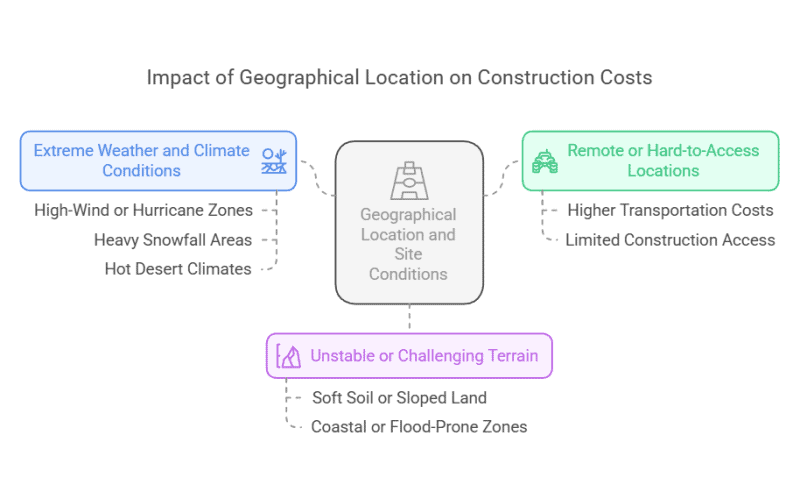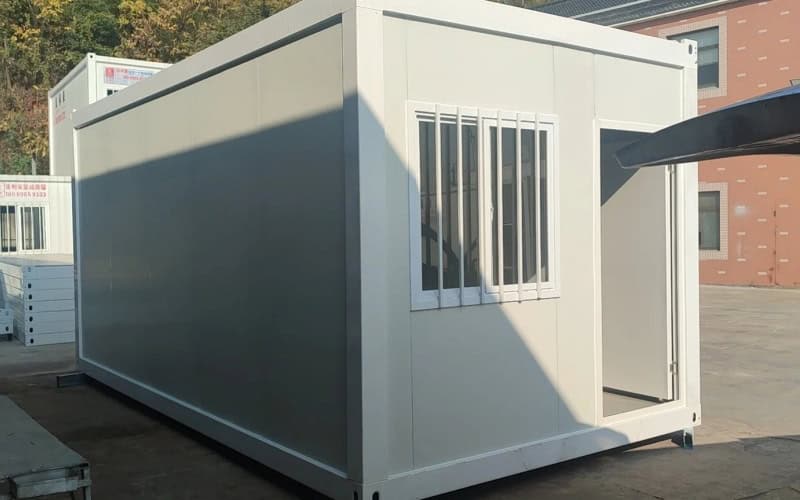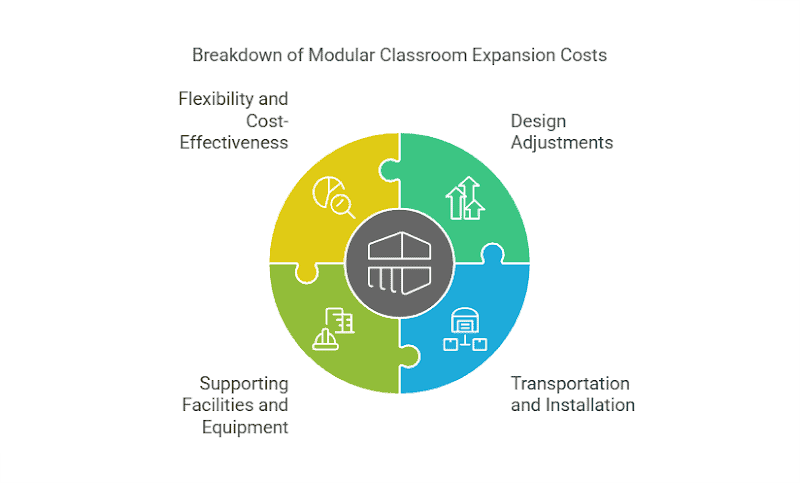When you’re deciding between traditional classrooms and modular ones, it’s about more than just space—it’s also about the costs, both upfront and down the line. We get it—budgets are tight, and the last thing you want is to stretch your resources. So, let’s break down how the costs compare and why modular classrooms might just be the smart, budget-friendly choice for your school’s growing needs.
How to Determine If Modular School Buildings Can Benefit You
If your school faces these challenges, modular buildings could be the smart, fast, and flexible solution.
✅ Overcrowded Campus
- Too many students, not enough classrooms or common spaces.
- Enrollment keeps rising, and you need space fast.
✅ Aging or Outdated Facilities
- Old buildings cost too much to maintain.
- Safety, accessibility, and energy efficiency are outdated.
✅ Rapidly Growing School
- More students mean more classrooms—quickly.
- New programs need dedicated spaces, like STEM labs or art rooms.
✅ Budget Constraints
- Modular buildings cost less than traditional construction.
- Lower maintenance means long-term savings.
✅ Tight Construction Timeline
- You need classrooms now, not in a year.
- Modular buildings are ready fast, minimizing disruption.
✅ Flexibility and Scalability
- Expand, relocate, or repurpose as needs change.
- Perfect for temporary or long-term use.
✅Sustainability and Environmental Goals
- Uses energy-efficient, eco-friendly materials.
- Some qualify for green certifications like LEED.
✅ Modern Learning Requirements
- Smart classrooms and high-tech setups are easy to integrate.
- A better learning environment improves student performance.
✅ Community and Parental Expectations
- Parents want safe, modern spaces for their kids.
- A well-equipped school enhances reputation and enrollment.
✅ Government Policies and Regulations
- Many regions support modular schools for faster expansion.
- Grants, tax incentives, and compliance benefits may apply.
If any of these sound familiar, modular school buildings could be the perfect fit—efficient, cost-effective, and built for the future. And it’s not just schools that benefit—modular and portable classrooms also provide solutions for businesses, environmental initiatives, and society at large.
Want to learn more? Check out Modular and Portable Classrooms: Solutions for Education, Business, the Environment, and Society
Factors Affecting the Cost of Modular School Buildings
1. Size
The larger the modular school building, the higher the cost—more materials, labor, and installation drive up expenses. Classroom type also plays a major role, as specialized rooms require extra infrastructure.
Classroom Type and Cost Differences
- Standard Classrooms (500-800 sq. ft.) – The most budget-friendly option, fitting 20-30 students comfortably.
- Science Labs & Specialty Rooms – Need extra plumbing, ventilation, and wiring, so expect a higher price tag, typically starting at $150 per square foot and going higher based on customization.
- Multipurpose Rooms – Larger spaces like gyms or cafeterias cost more due to reinforced structures and open layouts.
Building Size, Capacity, and Cost Variations
- Single-Classroom Unit (500-800 sq. ft.) – Compact, affordable, and great for 20-30 students.
- Multi-Classroom Building (1,500-3,000+ sq. ft.) – Fits 60-100 students, saving money by sharing walls and utilities.
- Large Modular School (10,000+ sq. ft.) – Ideal for hundreds of students, offering long-term scalability but at a higher upfront cost.
If you’re looking for the best value, multi-classroom buildings help cut costs per square foot, while specialty rooms add extra investment for specific needs. It’s all about finding the right balance!
2. Foundation and Structural Requirements
A solid foundation and the right structure are essential, but costs depend on soil, seismic needs, and building size. Get these wrong, and expenses can climb fast.
Foundation Costs and Variations
| Category | Description |
| Shallow Foundations | Work for stable ground, costing 10%-15% of the total budget—about 60%-80% of traditional foundation costs. |
| Deep Foundations | For weak soil, pushing costs to 20%-30% of the budget, 120%-150% of traditional costs. |
| Soil Reinforcement | Adds 20%-50%, common in coastal or soft soil areas. |
| Waterproofing | In high groundwater zones, raises costs 10%-15%, reaching 110%-125% of traditional waterproofing expenses. |
Structural Requirements and Cost Impact
| Category | Description |
| Steel Structures | Fast to install but need rust and fireproof treatments, bringing costs to 100%-120% of traditional structures. |
| Concrete Structures | Durable and cost-effective but heavier, ranging from 80%-100% of traditional costs. |
| Seismic Reinforcements | Adds 15%-30%, pushing costs to 115%-130% of traditional buildings. |
| Large-Span Buildings | Like gyms, need extra reinforcement, increasing costs 30%-50%, reaching 130%-150% of traditional structural costs. |
| Corrosion Protection | In humid or coastal areas, bumps costs 10%-20%, totaling 110%-120% of traditional protection costs. |
Choosing the right foundation and structure early saves money—because fixing mistakes later isn’t cheap!
3. Geographical Location and Site Conditions

Where you build can seriously affect costs, especially with tough terrain, remote access, or extreme climates. Here’s how:
- Remote or Hard-to-Access Locations
- Higher transportation costs – Shipping to isolated areas or mountainous regions adds logistics costs.
- Limited construction access – Narrow or rough roads may require extra site prep or cranes, increasing setup costs.
- Unstable or Challenging Terrain
- Soft soil or sloped land – Extra grading, retaining walls, or reinforced foundations raise groundwork expenses.
- Coastal or flood-prone zones – Higher costs for foundations and waterproofing to protect from water damage.
- Extreme Weather and Climate Conditions
- High-wind or hurricane zones – Stronger materials and specialized anchoring increase costs.
- Heavy snowfall areas – Roofs and structures need to withstand snow loads, requiring more durable materials.
- Hot desert climates – Enhanced cooling, UV-resistant materials, and better ventilation boost the budget.
The location and site conditions matter—tougher sites can mean higher costs.
4. Custom Complexity
Want a unique design or special features? Custom work might give you exactly what you want, but it comes at a price.
- Design Fees
Custom designs with special shapes or layouts require extra work from architects and designers. Expect research, brainstorming, and multiple revisions, which can push design fees up by 20%-50% more than standard plans. - Material and Procurement Costs
Using specialty materials for better insulation or soundproofing can be expensive—sometimes several times the cost of regular materials. Plus, custom shapes or sizes might lead to more waste during the cutting and installation process, driving up overall material costs.
Custom designs can drive up costs, but they give you a space perfectly tailored to your needs. With Modular Classroom Design using steel structures, you’ll enjoy both flexibility and durability—ensuring a unique, functional space that meets your practical and aesthetic needs for years.
5. Purpose – Temporary vs. Permanent Use
Temporary buildings are generally less expensive, but permanent ones require more durable materials and design for long-term use.
- Temporary Buildings:
Less expensive, typically 60%-80% of the cost of permanent buildings. Perfect for short-term classrooms, overflow spaces, or emergency setups. They’re quick to install and easy to relocate. - Permanent Buildings:
Built to last, 20%-40% more expensive than temporary ones. Ideal for long-term educational use and specialty rooms. They also cover both temporary and permanent needs in the future.
While temporary buildings work for short-term projects, permanent ones offer more flexibility and long-term value.
6. Building Codes and Regulations
Local regulations can impact costs, especially when it comes to safety and sustainability:
- Energy Efficiency:
To meet energy standards, you may need better insulation and energy-efficient windows, adding 10%-20% to material costs. - Fire Safety:
Fire-resistant materials and systems like sprinklers can drive up costs, depending on the building’s size. - Accessibility Standards:
To comply with ADA, expect costs for ramps, wider doorways, and accessible bathrooms—about 5%-15% more. - Sustainability:
Eco-friendly materials, like recycled steel or low-VOC paints, might add 15%-25% to costs.
These regulations are essential for safety and sustainability but can increase your budget.
7. Labor Costs
Even though 90% of modular school buildings are pre-assembled in the factory, the final 10% needs to be installed on-site. If your location is remote, expect higher labor costs for getting a skilled team of 3-5 professionals to complete the job.
DIY might seem tempting, but professional installation is always the safer bet. It ensures quality and saves you time and potential headaches.
8. Modular Structure Age and Condition

While most modular building manufacturers offer brand-new units, as a customer-focused steel structure provider, we can also source high-quality used modular units (like panels) to help cut your material costs by at least 20%.
Worried about the appearance? No need to stress! We offer full customization to make sure everything looks exactly how you want it.
And when it comes to connections, we always provide the latest newly produced fittings for top-notch performance.
9. Interior Finishing and Equipment
When outfitting a modular school building, the interior finishes can make a big difference. Here’s what you need:
Necessary Items
- Classroom Desks and Chairs
- Storage Cabinets and Shelving
- Whiteboards or Smartboards
- Lighting Fixtures
- HVAC Systems
Optional Items
- Custom Flooring
Adds comfort and style, but not always necessary. - Interactive Learning Tools
For a modern classroom setup, but not required. - Specialized Lab Equipment
For science, art, or other specialized rooms.
These additions make the space more complete and functional, creating a comfortable, effective learning environment.
Cost Analysis of Expanding Modular Classrooms
When you choose modular school buildings, expanding your classrooms is bound to come up as your needs grow. Here’s how the costs break down:

Design Adjustments
When you expand, you’ll need to tweak the design—think module connections and utilities. While this adds to costs, it’s still far more affordable than starting fresh.
Transportation and Installation
Since the site is already set up, transportation and installation are quicker and cheaper than new builds. You’re saving both time and money here.
Supporting Facilities and Equipment
You might need to upgrade or add facilities, like restrooms or furniture, but these are easy to predict and fit with your existing budget.
Flexibility and Cost-Effectiveness
Expanding gives you flexibility and faster turnaround—plus, it’s budget-friendly without compromising quality.
As a professional manufacturer of prefabricated steel structures, expansions are part of our after-sales service. With our past project insights, we can offer quick delivery, the best prices, and a stable, efficient design every time. Expanding your modular classrooms is a smart move. It’s cost-effective, quick, and gives you exactly what you need, without any hassle.
Cost Comparison: Traditional Classrooms vs Modular Classrooms
When it comes to building classrooms, the choice between traditional construction and modular options can significantly impact your budget. Let’s break it down:
| Cost Aspect | Traditional Classrooms | Modular Classrooms |
| Construction Costs | Higher due to extensive on-site work and materials. | Lower, as most of the construction is done off-site. |
| Time Costs | Can take months to complete due to on-site work. | Faster construction—often finished in weeks. |
| Maintenance Costs | Requires ongoing maintenance and repairs. | Low maintenance, built with durable materials for longevity. |
| Long-Term Benefits | High long-term costs for repairs and upgrades. | Lower total cost of ownership with energy efficiency and flexibility. |
| Flexibility for Expansion | Expanding may require significant additional work. | Easily expanded or reconfigured as needs change. |
| Advantages | Strong durability, customizable design. | Quick installation, cost-effective, low maintenance. |
| Disadvantages | Higher costs, longer timelines. | Limited customization options at initial stage. |
Suggestions from Our Experts for Modular School Buildings
Start Budgeting with Clear Customization
Begin by identifying the exact requirements for your modular school building. Define the number of classrooms, common areas, and key facilities. Customizing the design ensures you avoid unnecessary costs and stay within budget. This approach gives you control over the specifications and helps calculate your budget more accurately.
Focus on Long-Term Savings
While upfront costs matter, think about long-term value. Energy-efficient features like insulation and windows might cost more initially, but they will save on operational costs in the long run. This approach ensures your investment is sustainable and cost-effective over time.
Maximize Efficiency with Tailored Solutions
Opt for a solution that fits your unique needs. Custom modular buildings cut out waste and maximize efficiency, offering you the best value for your investment. Tailoring materials and design ensures that your modular school building matches your exact specifications without overspending.
Start Saving on Your Modular School Buildings Cost Today!
We know that pricing transparency is key, and we’re committed to keeping it clear and competitive for you. With 20 years of manufacturing experience and compliance with U.S. and European standards, we specialize in modular school buildings, including Accessible portable classrooms and Portable Sensory Rooms.With multiple factories under our belt, we control everything—from raw materials to production—ensuring better prices and faster results. No middlemen, no hassle. So, why wait? Choose us for reliable, cost-effective solutions—where transparency and quality meet.

